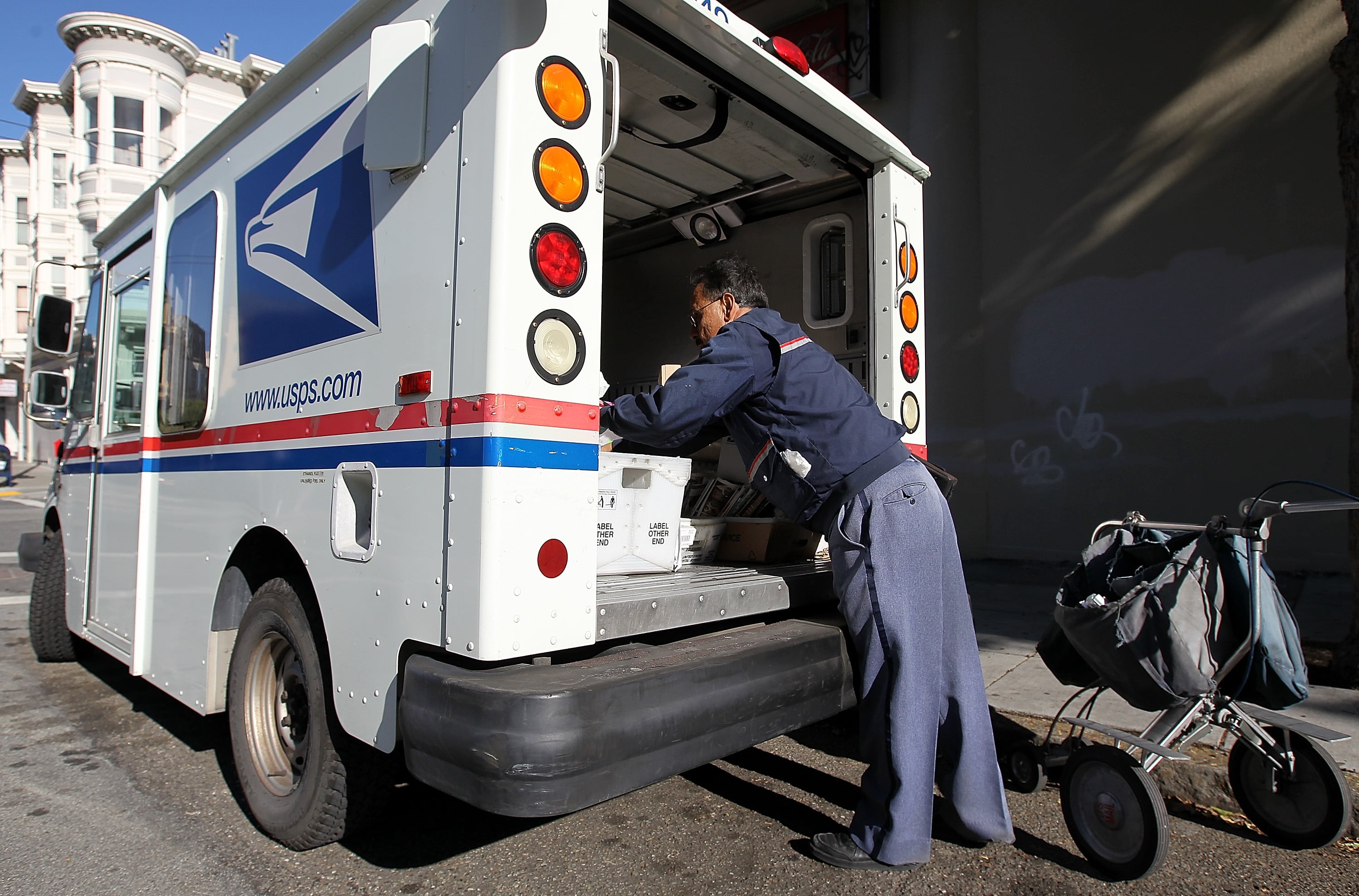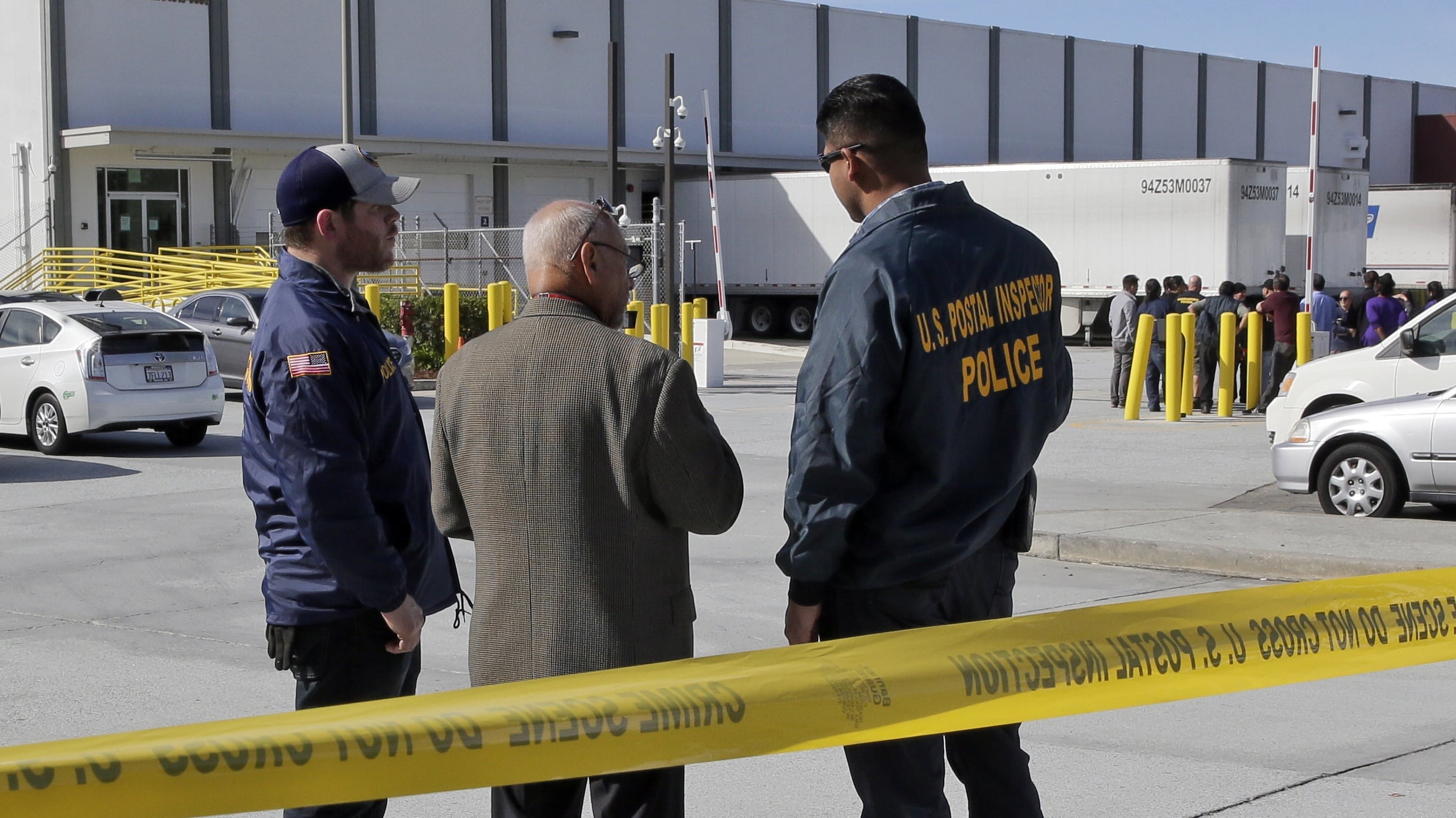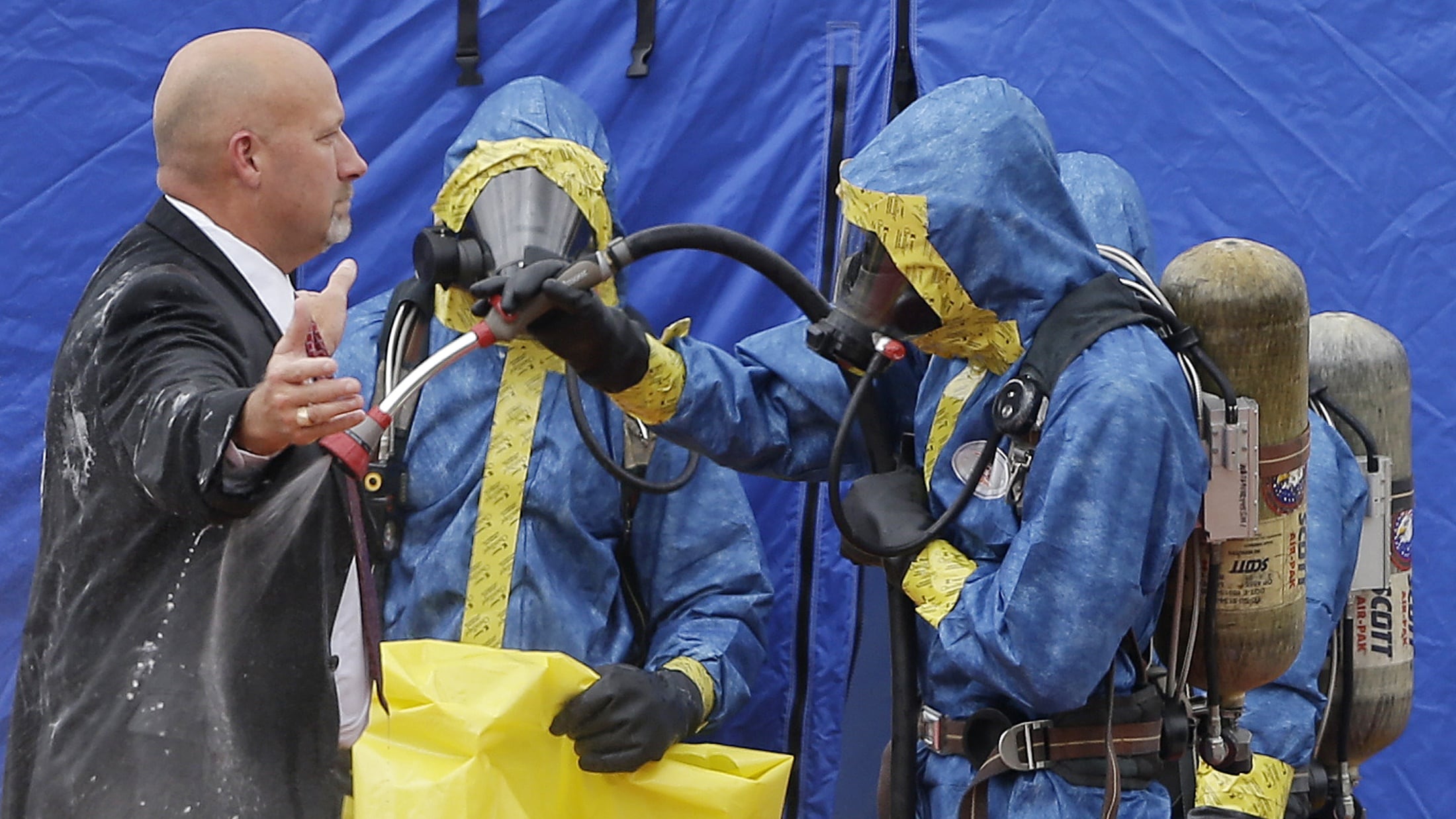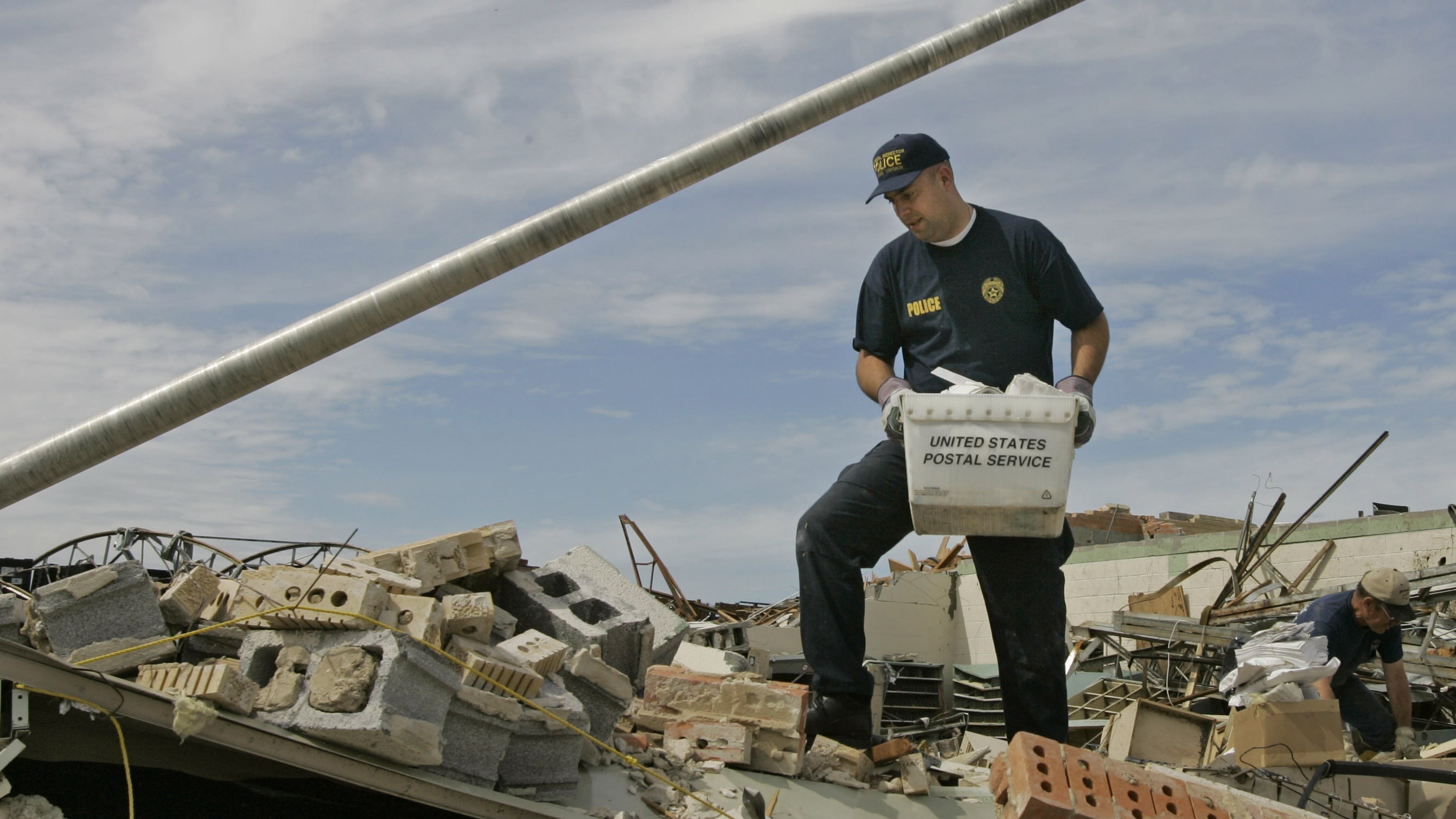Older than the entirety of the Department of Justice and predating the Federal Bureau of Investigations by over 100 years, the U.S. Postal Inspection Service is one of the oldest — and most rarely talked about — law enforcement entities in the United States government.
Though it’s not necessarily well-known, USPIS helps respond to incidents such as the recent spate of bombs mailed in the run-up to the midterm elections.
“The U.S. Postal Service processes and delivers more than 149 billion pieces of U.S. mail each year. Postal inspectors are mandated to safeguard all of it — including the people who move it and the customers who use it,” said Postal Inspector and National Public Information Officer Andrea Avery in an interview with Federal Times.
“And it’s all included in the price of a stamp. The U.S. Postal Service receives no tax dollars for operating expenses.”
RELATED

The USPIS marks its inception at the Aug. 7, 1775, appointment of William Goddard as the “surveyor” of the American postal service. The job of the surveyor — to investigate the theft of mail or postal funds — became a core component of a modern postal inspector’s duties.
The Postal Service employs about 1,280 postal inspectors, 570 postal police officers and 600 technical and administrative professionals responsible for maintaining the safety of other post office employees and preventing crime within the U.S. mail system.
It’s a comparatively small workforce when measured against other federal law enforcement agencies. As of March 2018, the FBI comprises more than 37,000 employees, and the Secret Service still outstrips USPIS with its more modest workforce of nearly 7,000.
Postal inspectors go through a 14-week training course under the Inspection Service’s Career Development Unit that covers threat management, investigations, introduction to the casework and training on Postal Service products and services.
For comparison, new FBI agents spend approximately 20 weeks in training.
Trained inspectors can then be responsible for enforcing more than 200 federal laws associated with U.S. mail and investigating crimes perpetrated through the postal system.

Dangers in the mail re-emerged in headlines this fall when a series of pipe bombs were sent to former President Barack Obama, presidential candidate Hilary Clinton, CNN and other Democratic Party leaders and news organizations.
The Secret Service initially detected the first of the explosive devices to make it to its recipients. But in an October statement, Postmaster General Megan Brennan called the lack of injuries related to the explosive packages “a testament to the hard work of our postal employees who were vigilant and aided in these investigations.”
And though explosive devices in the mail are a rare occurrence, according to Avery, the Dangerous Mail Investigations program is tasked with investigating and responding to suspicious parcels found within the mail system.
“DMI inspectors are trained to recognize common characteristics of suspicious mail and are highly proficient in the use of state-of-the-art equipment, to include portable X-ray machines,” said Avery.
“Any reports of suspicious mailings are taken very seriously, as they may impact the safety of postal employees and disrupt the processing of mail. We strive to provide a safe and secure mail system, preserve the integrity of the mail and, most importantly, ensure a safe environment for postal employees, Postal Service customers and the American public.”
But one of the USPIS’s more dangerous periods occurred in 2001, when letters containing anthrax spores were sent to Democratic senators and members of the media. The letters led to the deaths of two postal employees and three citizens, and caused the sickness of a postal inspector and 16 others.
But on most normal days, the work of the inspectors is much like that of any other form of law enforcement: identifying a crime, then investigating it, collecting evidence and presenting that evidence to a prosecutor. They also have the authority to arrest the individuals found to have committed mail-related crimes.
In total, the USPIS made more than 5,000 arrests and had more than 4,000 convictions in 2017, a majority of which were for mail theft and illegally mailed narcotics, according to a USPIS annual report.

Avery said that the diversity of USPIS responsibilities makes it difficult to describe a typical day. Inspectors usually focus on one type of case work, such as mail theft, mail fraud, contraband and dangerous mail investigations.
“If an inspector was assigned to work mail theft investigations, she would respond to and investigate complaints of mail theft, build cases and presenting the evidence to prosecutors. This includes talking to witnesses, other investigators, the victims and even the suspects. A mail fraud inspector would do the same things to build a mail fraud case,” Avery said.
“In smaller offices, an inspector could be working a little on cases from every type all in a day. As the security branch of the Postal Service, if something happens to one of our postal employees or a postal facility, this will take precedence over most daily activities and inspectors will respond immediately to the scene.”
A forensic lab in Dulles, Virginia, is dedicated to providing scientific expertise in identifying individuals who commit postal-related crimes. The USPIS also has its own dedicated cyber-crime group, and inspectors use cyber data and analytics to conduct narcotics investigations and protect the chain of mail.
But, according to the service’s website, the most important responsibility of the USPIS is protecting postal workers from assault, dangerous substances or other forms of harm.
In 2017, there were 626 cases initiated for assaults and threats against on-duty postal employees, with 160 convictions.
Because of the wide variety of crimes over which postal inspectors have authority, the service works frequently with both federal and local law enforcement.
“Our jurisdictions often overlap with agencies and successful investigations usually require collaboration and cooperation,” said Avery.
“In cases involving illegal drugs, we often partner with the [Drug Enforcement Agency] and Homeland Security. With fraud cases or dangerous mail investigations, we often work alongside FBI agents. Because local law enforcement agencies often have patrol officers on scene more quickly, we often work with those agencies for mail theft crimes.”
Jessie Bur covers federal IT and management.
In Other News




